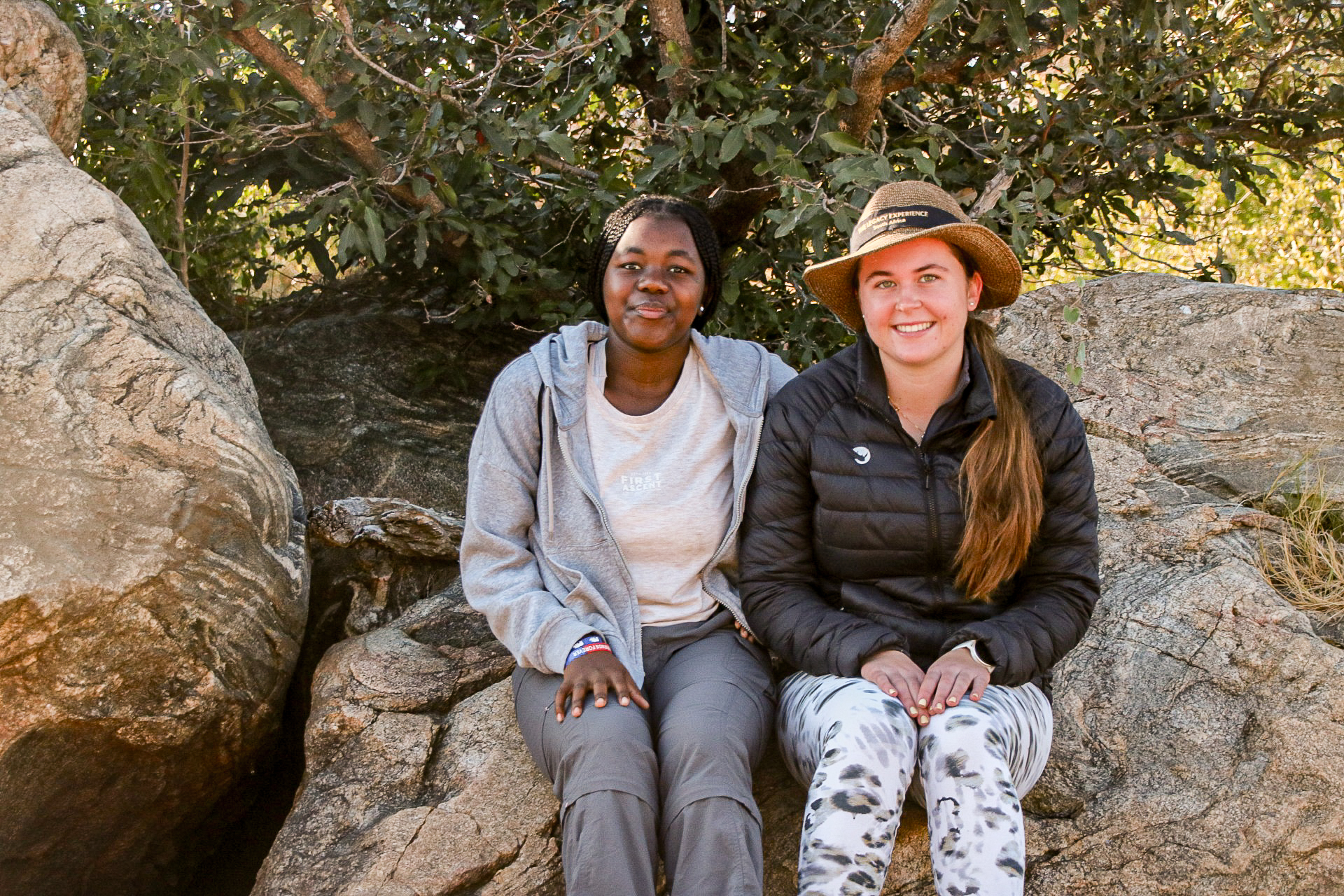River Pride
Led by males Hosi and Socha, this pride of lions was a force to be reckoned with in the northern territory of the Klaserie Private Nature Reserve (KPNR). Lodges in the area were seeing an average of 25 individual lions together–a captivating sight; full of power, potential, and promise.
In March 2022, three new pride members arrived in the secrecy of Dundee Creek, where one of the River Pride females broke away to give birth. A couple of photos emerged of the tiny new additions, showing their typically mottled fur visible between the green leaves of the wattle thicket they were hidden in. News spread quickly across Klaserie and over time, a few more excited onlookers were lucky enough to get a glimpse of the cubs.
Makumu Private Game Lodge shared their first photo with us, taken by Adrian van Zyl, and Klaserie Drift Safari Camps’ guide Nick Smith shared his shot of one of the cubs nestling in the crook of its mother’s foreleg. Precious moments we are so fortunate to witness! Lion cubs have a notoriously high mortality rate of about 80%,but the River Pride has had above average success and very few new-borns that we know of have not survived.

Chatting to Klaserie Drift guide Emily Whiting ,it sounds like there might be more from where these cubs came from... At the time this issue went to print, more than one female in the pride is suspected to have broken off to give birth.The males are likely to have mated with a number of different lionesses in oestrus, meaning cubs are often born quite close together in a pride this size, so watch this space!
As social cats, we expect to see lions in a family group, but knowing what it takes to feed and sustain animals of this size, there is be tension around food, and when it comes to survival, the gloves come off even in close-knit prides like this. As a result, pride fragmentation does take place, and what has been reported from guides in the reserve is that there is a fair amount of splitting off that is taking place.
Simbavati Camp George Manager, Manie Esterhuizen, told us that the pride does split into smaller groups and every few days they re-join. There are about 17-19 seen together as a large group, with various members fragmenting temporarily, which is only normal. Smaller groups can target and survive off of smaller, easier prey species, while as a whole, the River Pride would need to be hunting giraffe and buffalo regularly in order to sustain themselves.
The two dominant males continue to patrol the territory, and we will continue to see numbers of subadults nearing their exit age. Emily shared the opinion that perhaps the lionesses and subadult cubs that break off occasionally are essentially developing the youngsters’ skill level in a smaller pride, which is important especially for male lions that will outgrow their large natal pride.
We look forward to watching the evolution of the Klaserie’s River Pride, and seeing new life brought into the pride as maturing lions begin to break away. It is fascinating to watch the life cycle of Africa’s king cat at such an intimate level.

Be the first to know
Keep up to date with our wildlife conservation efforts and progress in our Eco Children community, and be the first to know about lodge specials running in the reserve by signing up for our newsletter.





